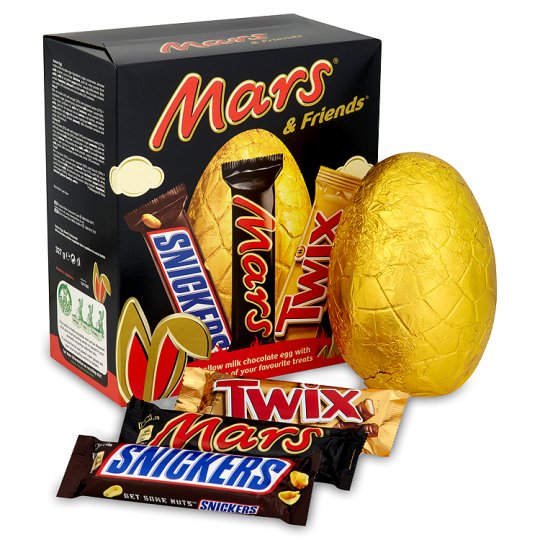The Easter egg chocolate is all eaten, Easter has drawn to a close. The packaging is still with us however and as the Waste collection trucks come calling you need to properly end the Easter period with a good clean up.
Single-use items, particularly packaging waste is a significant global issue, implicating and affecting us all and right now is a timely example : Easter Eggs.
Eggstra packaging hangover
Whether an indication of pandemic pampering or not, supermarket shelves appeared barren of the colourful cardboard boxes just ahead of the holiday weekend, a portent of the deluge of packaging waste to come.
Irish people eat more than 17 million Easter eggs over Easter, shelling out almost €40 million and generating about 20,000 tonnes of packaging waste in the process according to a 2018 Repak survey.
A more recent Repak poll of 1,000 adults revealed that over a quarter (29%) will have gifted others Easter eggs this year, despite Covid19 restrictions.
Repak poll 2021
- This Easter, 57% of those polled by Repak planned to purchase up to 6 chocolate eggs and another 12% will buy 10 or more eggs! Is this really necessary? Are we being too greedy?
- Last year, 26% of the public bought alternative presents to reduce the packaging on items that they gift. A significant 92% said they would prefer to receive Easter eggs that are accompanied by fully recyclable packaging. Despite this eco conscious mindset, our love for gifting Easter treats hasn’t waned in 2021. (source Repak)
While there are Eco choices in Eggs, the vast majority still come wrapped in presentation boxes, plastic frames and silver paper. Is it all necessary for a few grams of chocolate?
That’s a lot of Easter eggs and unfortunately a lot of packaging too. The bulk of Easter eggs come in a branded cardboard boxes with a clear plastic window to peek inside.

Over Packaged?
On average, packaging alone accounts for up to a quarter of the total weight in many of the best-selling Easter eggs, with some reaching nearly 40% packaging.
Many feel that chocolate eggs are over-packaged – a sentiment that was felt in a recent study where 62% of European consumers said they would be willing to pay more for food products that contain less plastic packaging.
People talk and good brands listen. One such brand is Nestlé, who in 2018, reduced its packaging by around 30%. More followed and more will follow.
Repak said they have seen huge changes in packaging with Ireland’s biggest Easter egg producers. Members of Repak, including Mondelez, Nestlé, Mars and Butlers have reduced their packaging by over 30% in the last ten years. Many products also now use 100% recycled cardboard as well as decreasing the box size over the years and excess packaging has been reduced by up to 40%.
This is good news but not nearly ambitious enough. We must try harder to avoid the creation of non-recyclable or re-usable packaging. We must change consumer expectations to demand only essential, reusable hygienic packaging that can be taken back at the point of purchase.
This puts a burden on consumers to recycle what elements can be recycled and dispose of the non-recyclable stuff.
Action and re-action
Why not take the non-recyclable packaging back to the shop and leave it with them. (This is the plastic wrapping, silver paper and elements without recycling labelling). If enough of us dropped back materials to the stores they would soon re-act and take actions to reduce the volume of packaging from their own suppliers.
Are you staring at a pile of packaging?
First, you must learn from any mistakes you made this year. So next year, and for the rest of this year too, when buying chocolate gifts, look for products that have the least amount of packaging.
Loose Easter eggs are a great option as you can recycle the aluminium foil.
Save any boxes, baskets, or packaging to repurpose next year. You can even reuse any plastic packaging like the dozen egg trays. You can refill with more loose eggs next year.

How to Recycle Your Easter Egg Waste
Easter egg foil
Roll your Easter egg foil into a ball until it is about the size of a baseball or cricket ball. Then place it into your recycling bin. If there’s any chocolate on the foil, then give it a quick wash and let it dry before you roll it into the ball.
You could even make a game of this and see who can collect the most aluminium foil.
Cardboard packaging
Flatten any cardboard boxes and place them into your recycling bin along with your regular paper and cardboard. If there is really good artwork on boxes why not keep it and reuse the box.
Hard Plastic packaging
The hard plastic packaging around Easter eggs is not always marked with a plastic number 1 to 7, so it’s hard to tell if it’s recyclable. Even though often made from PET, a recyclable plastic, it’s best to avoid this plastic packaging if you can. But fortunately, it is commonly made from PET, or plastic number #1, the same plastic in plastic water bottles.
Check if it’s rigid plastic by doing the scrunch test. If it bounces back into shape, then it’s rigid plastic. Rigid plastic can be placed in your recycling bin. If it scrunched up into a ball, it is soft plastic and must be recycled at local soft plastic recycling drop-off points. There are many of these in local supermarkets like Lidl.
Wrappings, bags or other soft plastics
If the plastic can be scrunched and will not return to its original shape, it can be recycled with your soft plastics. Collect all this plastic along with any plastic wrapping. Then take it to your local recycling or amenity drop-off location. If not close by, try your supermarket collection bins (they’re behind the checkouts at Lidl).
So, now that you’ve enjoyed the chocolate, make the effort to tidy up and recycle and why not make a definite plan to AVOID buying any over packaged Eggs next year.
The tide is turning. The tide is turning in sentiment towards disposable packaging and beverage container waste.
ZWAI believe that our ultimate victory in the war on waste is assured. It is only a matter of time. The impacts of single use items being dumped or burned is getting so obnoxious to the world’s populations that it will reach a tipping point of unacceptability. To hasten that day, we need consumers, business owners, shareholders, NGOs and governments (driven by voters) to act in unison to make it painful to pollute. We simply must reduce the huge volumes of single-use items going to landfill, airfill, waterways and oceans just to ensure our own survival.
